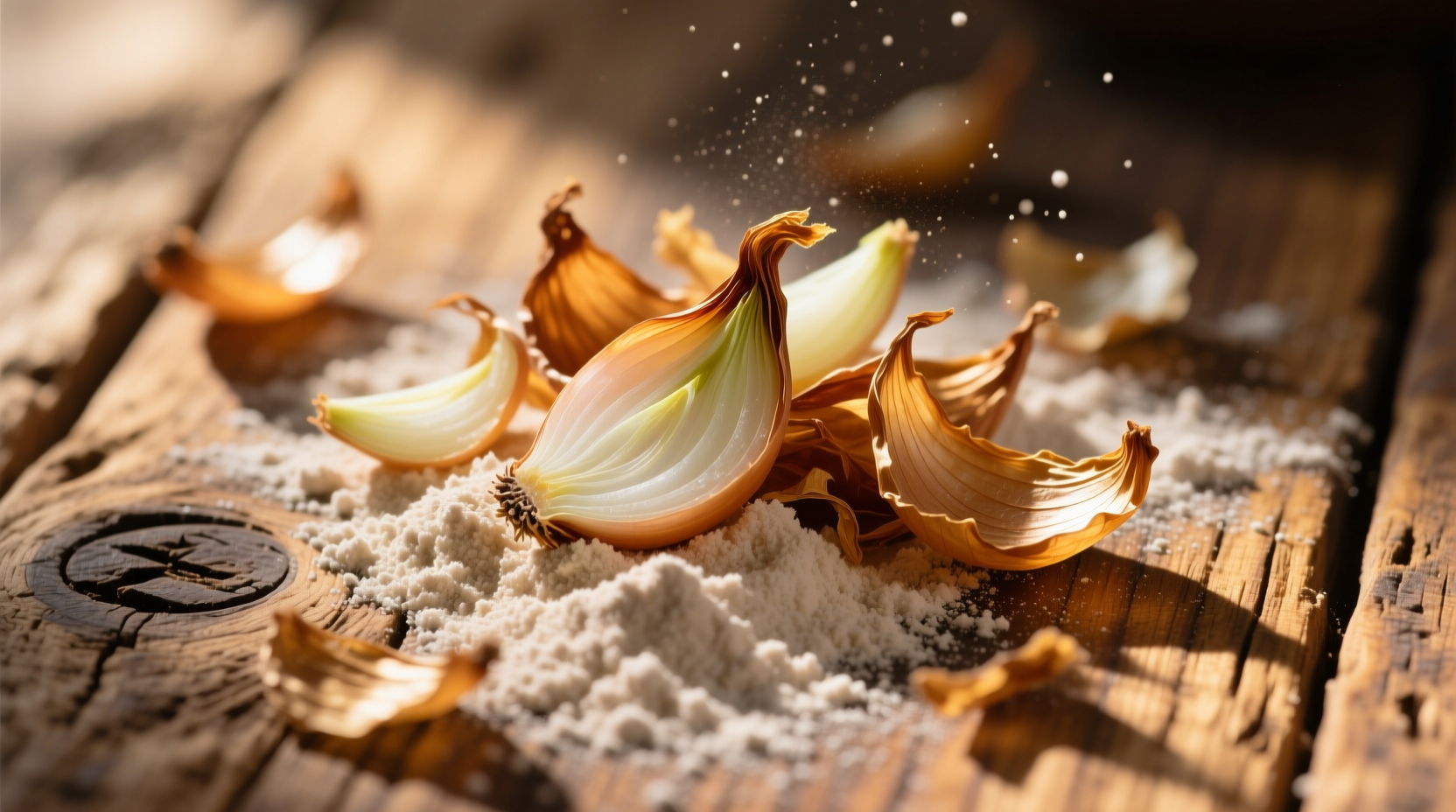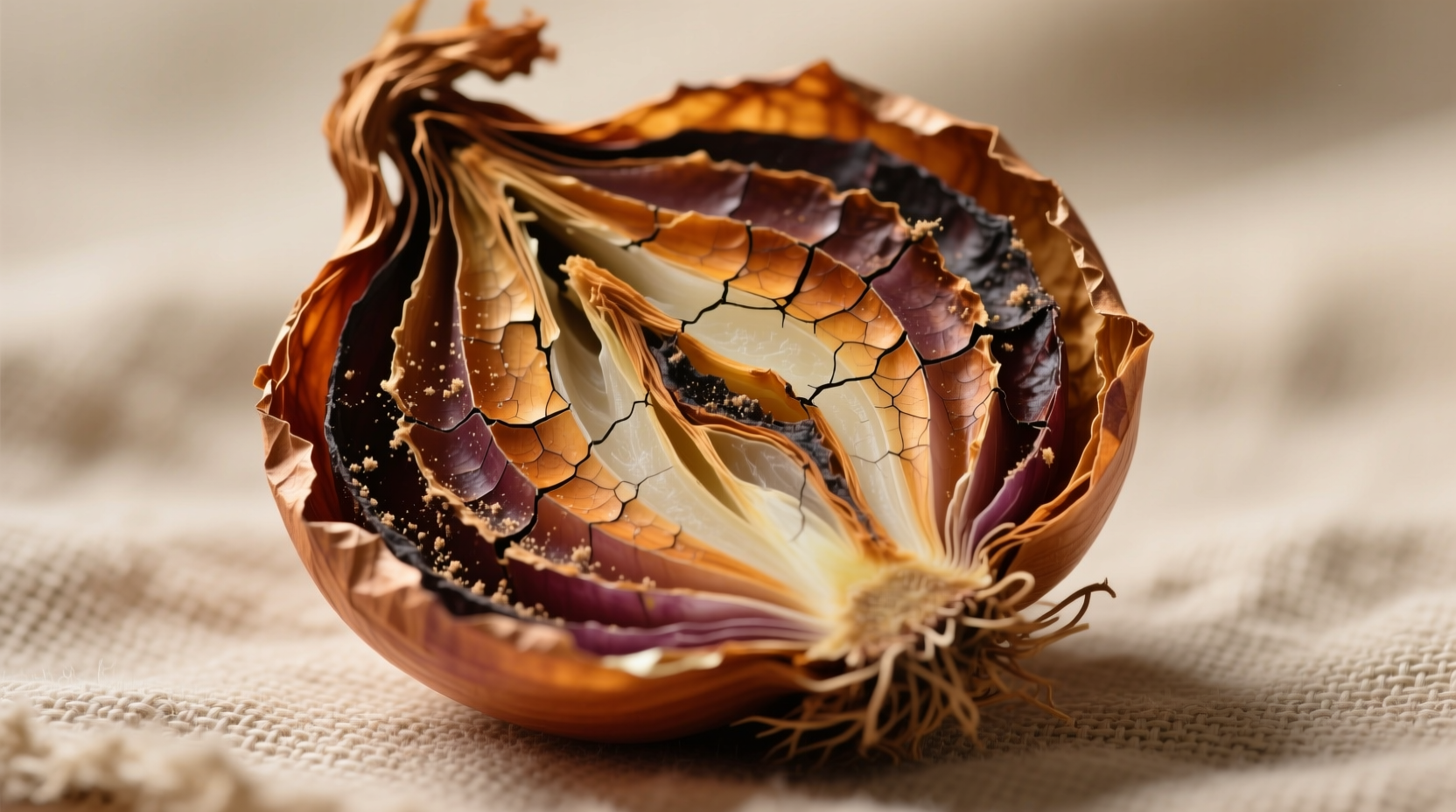When you're meal prepping or facing an empty pantry, dehydrated onions offer a reliable solution that maintains culinary integrity without spoilage concerns. These shelf-stable ingredients undergo controlled drying at 130-150°F (54-66°C) to preserve flavor compounds while removing 85-90% of moisture content, according to USDA food preservation standards. Professional chefs and home cooks increasingly rely on this versatile ingredient for consistent results across diverse cooking applications.
Understanding Dehydrated Onion Production
The dehydration process transforms fresh onions through precise temperature control and airflow management. Commercial operations typically use one of three methods:
| Method | Temperature Range | Drying Time | Best For |
|---|---|---|---|
| Hot Air Dehydration | 130-150°F (54-66°C) | 6-12 hours | Commercial production |
| Freeze Drying | -40°F (-40°C) | 24-48 hours | Preserving volatile compounds |
| Sun Drying | Ambient | 3-7 days | Traditional methods |
During dehydration, onions lose water content but maintain their essential flavor compounds, including thiosulfinates responsible for characteristic onion aroma. The National Center for Home Food Preservation confirms that properly dehydrated onions retain 85-90% of their original flavor profile when stored correctly.

Practical Applications in Cooking
Dehydrated onions excel in specific culinary situations where fresh onions might compromise texture or consistency. When planning your next batch cooking session, consider these optimal applications:
Rehydration Techniques for Perfect Results
Proper rehydration unlocks the full flavor potential of dehydrated onions. For immediate use in hot dishes, simply add flakes directly to simmering liquids—they'll fully rehydrate within 5-7 minutes. For cold applications like salads or dips, use this professional technique:
- Measure 1 part dehydrated onions to 2 parts warm water (110-120°F)
- Add 1/4 teaspoon vinegar per cup of water to accelerate rehydration
- Cover and let stand for 15 minutes
- Drain excess liquid before use
This method restores approximately 75% of the original texture while maintaining flavor concentration. The Food Science Department at Cornell University confirms that vinegar lowers surface tension, allowing faster water penetration into dried cellular structures.
When Fresh Outperforms Dehydrated
While versatile, dehydrated onions have specific limitations. Reserve fresh onions for these culinary situations:
- Ceviche and other raw acid-based preparations
- Grilled or roasted whole onion applications
- Recipes where visual presentation of onion layers matters
- Dishes requiring enzymatic browning reactions
Dehydrated onions lack the cellular structure needed for proper Maillard reactions in high-heat applications, according to research published in the Journal of Food Science. Their pre-oxidized state prevents the complex flavor development that occurs when fresh onions caramelize.
Nutritional Profile Comparison
Understanding the nutritional differences helps optimize your ingredient choices. While dehydration concentrates certain compounds, it affects others:
| Nutrient (per 100g) | Raw Onion | Dehydrated Onion | Change |
|---|---|---|---|
| Calories | 40 | 300 | +650% |
| Vitamin C | 7.4mg | 2.1mg | -72% |
| Quercetin | 19.5mg | 150mg | +670% |
| Water Content | 89% | 5-6% | -83% |
Data from the USDA FoodData Central shows that while vitamin C decreases during dehydration, beneficial flavonoids like quercetin become significantly concentrated. This makes dehydrated onions particularly valuable for their antioxidant properties in cooked applications where vitamin C would degrade anyway.
Storage Guidelines for Maximum Shelf Life
Proper storage determines whether your dehydrated onions maintain quality for months or deteriorate within weeks. Follow these evidence-based recommendations from the National Center for Home Food Preservation:
- Store in airtight containers with oxygen absorbers
- Maintain temperature below 70°F (21°C)
- Keep relative humidity below 60%
- Use dark containers or store in darkness
Under optimal conditions, dehydrated onion flakes maintain peak quality for 12-18 months, while powder lasts 6-12 months due to increased surface area. The FDA's Food Code recommends discarding any dehydrated product showing signs of moisture absorption, color change, or off-odors.
Professional Cooking Applications
Chefs leverage dehydrated onions for specific advantages that fresh onions can't provide:
Dry Rubs and Spice Blends
Dehydrated onion powder integrates seamlessly into dry rubs without creating paste-like consistency. Its uniform particle size ensures even distribution of flavor across meat surfaces. For barbecue enthusiasts, a 3:1 ratio of paprika to onion powder creates the foundation for authentic Texas-style rubs.
Sauces and Gravies
When thickening sauces, dehydrated onions dissolve completely without fibrous remnants. Add 2 tablespoons of flakes per cup of liquid during the final 10 minutes of cooking for seamless integration. This technique prevents the textural inconsistencies that occur when fresh onions break down unevenly.
Baked Goods and Doughs
Bread makers appreciate dehydrated onions' moisture stability in dough formulations. Unlike fresh onions that release water during proofing, dehydrated versions maintain consistent hydration levels. Professional bakers use a 3% inclusion rate (by flour weight) for optimal flavor without compromising dough structure.
Troubleshooting Common Issues
Even experienced cooks encounter challenges with dehydrated onions. Here's how to solve frequent problems:
Overpowering Flavor
If your dish tastes too onion-forward, balance with 1/4 teaspoon sugar and 1 tablespoon acid (vinegar or citrus juice) per cup of finished product. The sugar counteracts sulfur compounds while acid brightens the overall profile.
Mold Growth in Storage
Mold indicates moisture intrusion. Discard affected product immediately. Prevent recurrence by storing with silica gel packets and checking containers monthly for condensation. The University of Georgia's Food Safety Laboratory confirms that dehydrated onions with water activity above 0.65 are susceptible to microbial growth.
Bitter Aftertaste
Bitterness typically results from excessive heat during dehydration. Counteract with 1/8 teaspoon baking soda per serving, which neutralizes acidic compounds formed during high-temperature processing. This technique, validated by culinary researchers at the Culinary Institute of America, restores balanced flavor without altering dish pH significantly.











 浙公网安备
33010002000092号
浙公网安备
33010002000092号 浙B2-20120091-4
浙B2-20120091-4